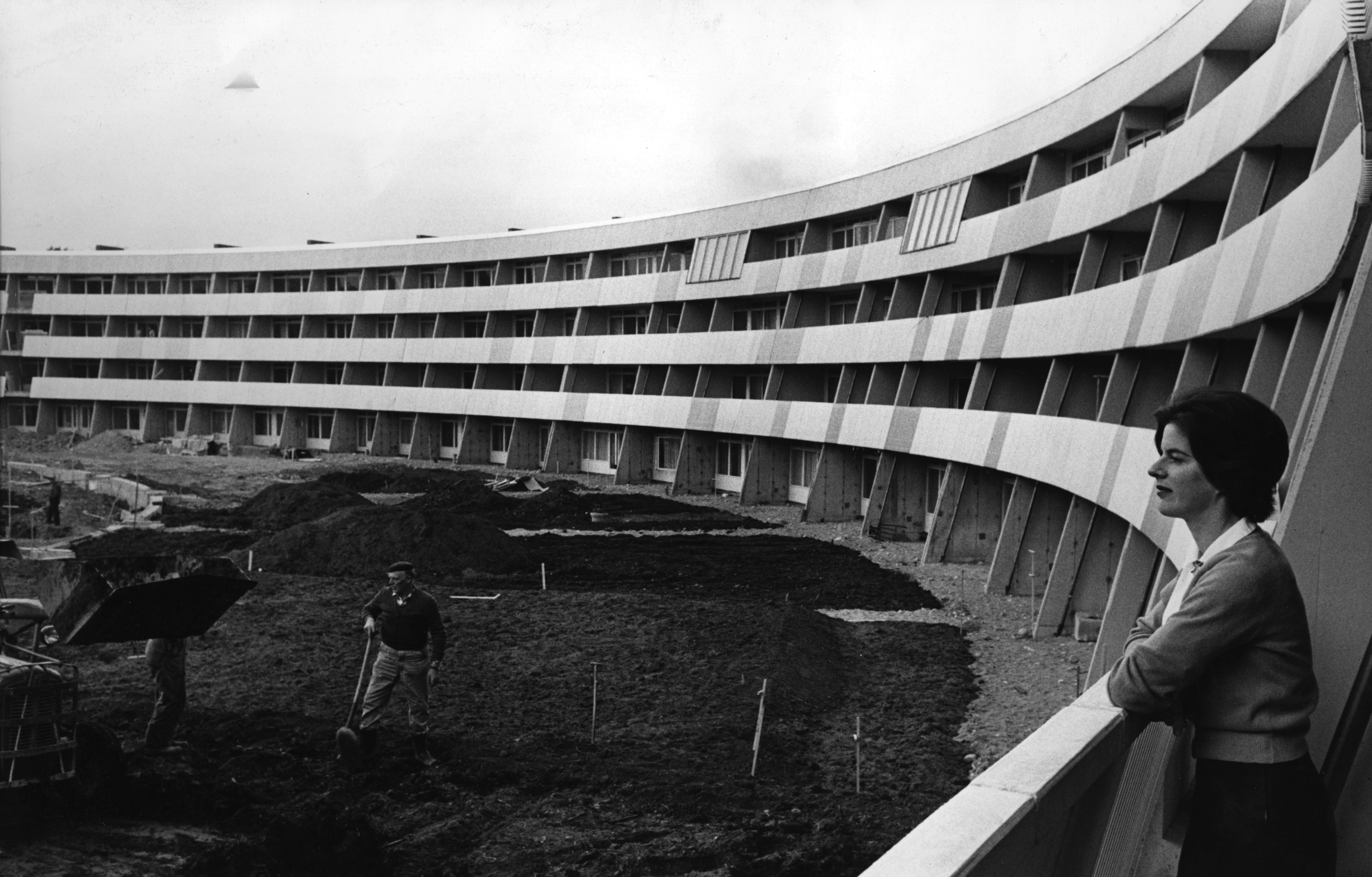
The Wenner-Gren Center and the possibility of steel building in postwar Sweden
The Wenner-Gren Center’s primary mission is to promote international cooperation in scientific research, but already in its construction phase, it has been of great significance for the Swedish building industry by re-introducing steel as a competitive framing material, prompting new technical solutions that have now become available to others in Swedish construction.
Byggnadsvärlden no. 45, 1961

On November 1, 1955, Swedish public radio and the front pages of all the local newspapers announced that the industrialist and founder of Electrolux, Axel Wenner-Gren, and his celebrity wife, the former opera singer Marguerite Wenner-Gren, had donated ten million Swedish kronor for the establishment of a scientific foundation. The previous day, the couple had hosted a press conference at their grand villa in Diplomatstaden, in Stockholm’s embassy district. There, Axel Wenner-Gren had announced to the media that the couple’s aim was to establish a major international research center owned and administrated by the Wenner-Gren Foundation. Wenner-Gren, then 72 years old, presented this contribution as one of his last major philanthropic initiatives, stating that he firmly believed that scientific research could advance greatly if the material resources were available, and asserting that “research is an elementary and vital factor for cultural progress and for society’s healthy development.” In order to support what he believed to be “a surprising number of outstanding scientists in our little country,” he intended to establish the center and house it in an 18-story tall building. This tower would be a venue for conferences and symposia; it would contain a library, an auditorium, lecture halls, and apartments for about a hundred researchers, as well as offices for the Wenner-Gren Foundation and other research administrations. This was the very beginning of a vision of a center that would attract scientists from both Sweden and abroad. It was a response which reflected a contemporary international concern with supporting the development of the technical and scientific fields in the wake of the Second World War.
These aspects vary constantly, so each wave is different from another wave, even if not immediately adjacent or successive; in other words, there are some forms and sequences that are repeated, though irregularly distributed in space and time.
Since what Mr. Palomar means to do at this moment is simply see a wave — that is, to perceive all its simultaneous components without overlooking any of them — his gaze will dwell on the movement of the wave that strikes the shore until it can record aspects not previously perceived; as soon as he notices that the images are being repeated, he will know he has seen everything he wanted to see and he will be able to stop.
Frida Rosenberg 2018 — Stockholm, Sweden